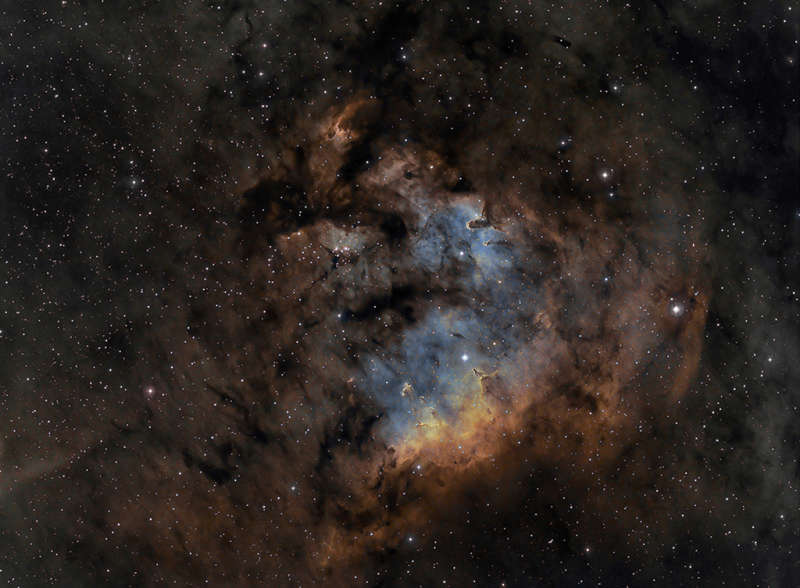
|
Credit & Copyright: César Blanco
González
Explanation:
Hot, young stars and
cosmic pillars
of gas and dust seem to crowd into NGC 7822.
At the edge of a giant
molecular cloud toward the northern
constellation Cepheus, the glowing star forming region
lies about 3,000 light-years away.
Within the nebula, bright edges and dark shapes are
highlighted in this
colorful skyscape.
The image includes data from
narrowband filters,
mapping emission from atomic oxygen, hydrogen, and sulfur into blue,
green, and red hues.
The atomic emission is
powered by energetic radiation from
the hot stars, whose powerful winds and radiation also sculpt
and erode the denser pillar shapes.
Stars could still be forming inside the pillars by
gravitational collapse,
but as the pillars are
eroded away, any forming stars will ultimately be cutoff from their
reservoir of
star stuff.
This field spans around 40 light-years at the estimated distance
of NGC 7822.
|
January February March April May June July August September October November December |
| ||||||||||||||||||||||||||||||||||||||||||||||||
NASA Web Site Statements, Warnings, and Disclaimers
NASA Official: Jay Norris. Specific rights apply.
A service of: LHEA at NASA / GSFC
& Michigan Tech. U.
Based on Astronomy Picture
Of the Day
Publications with keywords: emission nebula - star formation
Publications with words: emission nebula - star formation
See also:
- APOD: 2025 September 19 Á The NGC 6914 Complex
- APOD: 2025 September 10 Á The Great Lacerta Nebula
- APOD: 2025 July 21 Á Cats Paw Nebula from Webb Space Telescope
- APOD: 2025 July 16 Á The Rosette Nebula from DECam
- APOD: 2025 July 10 Á Lynds Dark Nebula 1251
- APOD: 2025 July 5 Á Ou4: The Giant Squid Nebula
- APOD: 2025 June 26 Á The Seagull Nebula
